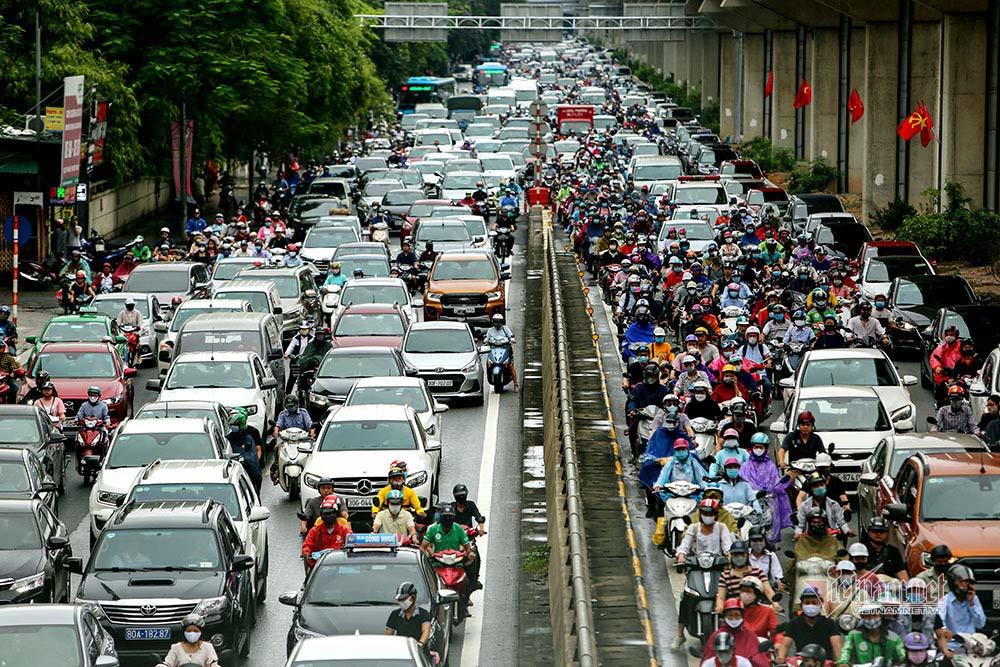
A report by the consultant of the project on tolls collected from vehicles entering certain areas in Hanoi found that car drivers and people traveling by private car were willing to pay VND22,500 for each entry, according to a survey.
The toll to be collected to ease traffic jams should be higher than that level to be able to encourage people to give up the habit of using private vehicles.
The consultant suggested flexible toll collection for peak and off-peak hours, under which the tolls will be zero or lower for off-peak hours.
The tolls that the consultant suggested for weekdays would be VND25,000-60,000 for the owners of fewer-than-9-seat cars. For cars with 9 seats or more and trucks of different types, the suggested toll is VND15,000-40,000.
The consultant suggested a fee exemption for weekends and holidays, because traffic congestion is less serious than during weekdays.
The vehicles that may enjoy fee reductions include transport services (cars running under contracts; tours, fixed-route cars; trucks of different types, cars with fewer than nine seats in these localities; cars owned by agencies and offices in these localities). The vehicles would be exempted from fees only for a certain number of entries.
The vehicles to be exempted from fees include police cars, ambulances, fire trucks, military vehicles; vehicles in active service; and public buses.
To collect tolls, the consultant suggested setting up 87 toll collection stations in 68 positions. The total investment capital for the stations is estimated at VND2.646 trillion, including initial investment and cost for replacing depreciated equipment. This doesn’t include operation costs.
Of this amount, VND456.276 trillion would be spent on 15 stations in nine positions, VND1.794 trillion on 59 stations in 46 positions in the second phase and VND395.439 trillion on 13 stations in 13 positions in phase 3.
With the tentative toll of VND50,000 for private cars with fewer than 9 seats and VND30,000 for passenger cars with 9 seats and more, and trucks, the total toll collection would be VND769 billion a year in phase 1, VND1.17 trillion in phase 2 and VND1.3 trillion in phase 3.
Once the toll collection begins, the traffic capacity on main routes is expected to fall by 8-30 percent and 12-18 percent on average.
The collection is expected to lead to a shift from private cars to more friendly means of transport.
Vu Diep

Hanoi plans to build 87 toll booths in inner city areas to ease traffic congestion
To ease traffic congestion in the city hub, the Hanoi Department of Transport has worked out a plan to install 87 toll stations on ring roads.

Fighting traffic gridlocks: Hanoi needs more than one hero
In July, the Center for Environment and Development of the University of Oslo, Norway organized a webinar entitled “Sustainable urban transport in Vietnam: Transition, challenges and future prospects”.